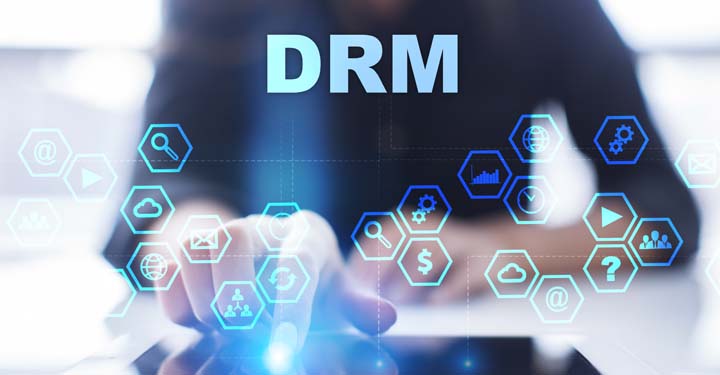Digital rights management (DRM) is used to control the use of digital content. DRM helps content providers by limiting how users can access and use their content. So, what does this mean? It means you cannot copy a video file or music file from your computer onto another device like an mp3 player or your cell phone unless you have the correct software to do so first.
This can be inconvenient at times, but there are benefits to using Digital Rights Management software as well. It prevents unauthorized people from accessing your files, and it prevents you from giving away copies of the content on a CD or other digital format that could be easily duplicated. Keep reading for more information about video DRM and why it’s important for content creators and distributors.
What is Video DRM?
DRM for video, more commonly called video DRM, is software used to protect digital video content. DRM allows publishers to choose who can view and use their video content, how that content can be used, and what charges are associated with those uses. Video DRM may be implemented as computer software, as a built-in feature of a digital video recorder (DVR) or digital television receiver, or as a combination of both. Video DRM may be used to control the copying and redistribution of content as well as the times, places, and a number of people who can view the content. Video DRM systems may use digital watermarking to identify the source of any unauthorized copies. This information can then be used to identify the source of an unauthorized copy.
Digital Rights Management Software
DRM is sometimes called digital rights management software. DRM is computer code that controls how digital content is used, copied, and shared. A DRM system uses encryption and other methods to track and control the use of content like music, books, movies, and computer programs. Digital rights management is used to prevent unauthorized copying and distribution of intellectual property such as music and books. DRM is also used to control how licensed software is used. DRM has been used on video content since the mid-2000s. A DRM system uses an internet connection to identify the user who is trying to open a file. The DRM system also checks a central computer database to see if the user has permission to open the file. If a user outside the permitted group tries to open the file, the file appears to be corrupted or unusable. The system also tracks the number of times a file is opened, and the device types used to open the file.
DRM Protection for Videos
When you watch a video on a streaming platform like YouTube, Amazon Video, or Netflix, you may have noticed there is a “closed captioning” or “subtitles” button. This is due to a law that requires all digital content providers to provide their content to people with hearing or vision impairments. However, the law does not require the providers to allow users to save the video for offline viewing. Most video platforms use DRM to protect the video from being copied and downloaded onto your computer or device. This is done because video providers rely on advertising for their revenue. The more people are watching their videos, the more they can make from advertising. If a user tries to download the video, the DRM software will prevent them from saving the video file. Instead, the DRM software will save the video as an audio file or a video file with a static image or subtitles displayed. In some cases, the user may be able to save the video as a low-resolution video file.
Streaming Protection and DRM
Video streaming allows users to watch videos online as they are being played rather than downloading the video and watching it later. Streaming video has become popular as more people use smartphones and other mobile devices to watch videos. Most video streaming services use digital rights management (DRM) to protect video content from being copied.
A DRM system uses an internet connection to identify the user who is trying to open a file. The DRM system also checks a central computer database to see if the user has permission to open the file. If a user outside the permitted group tries to open the file, the file appears to be corrupted or unusable. The central computer database tracks the number of times a file is opened, and the device types used to open the file. This information can be used to identify the source of an unauthorized copy. The information can also be used to identify the source of a video that could be used to cause harm or spread harmful malware or viruses.
Limitations of DRM for Videos
DRM is used to protect digital content such as eBooks, music, videos, and computer programs. DRM helps content providers by limiting the ways that users can access and use their content. DRM also helps protect copyrighted material from being distributed illegally. DRM also helps protect people from harmful viruses and malware that could be used to infect their devices by embedding in a video file. However, DRM does not completely protect against all forms of malicious software. Some DRM software has been cracked by hackers who have found ways to break the code and access the content without paying for it. DRM may be able to track the number of times a file is opened, but it cannot always protect against illegal file sharing and distribution.
Conclusion
DRM is used to protect digital video content. DRM prevents unauthorized people from accessing your files and you from giving away copies of the content on a CD or other digital format that could be easily duplicated. DRM also helps protect people from harmful viruses and malware that could be used to infect their devices by embedding in a video file.
